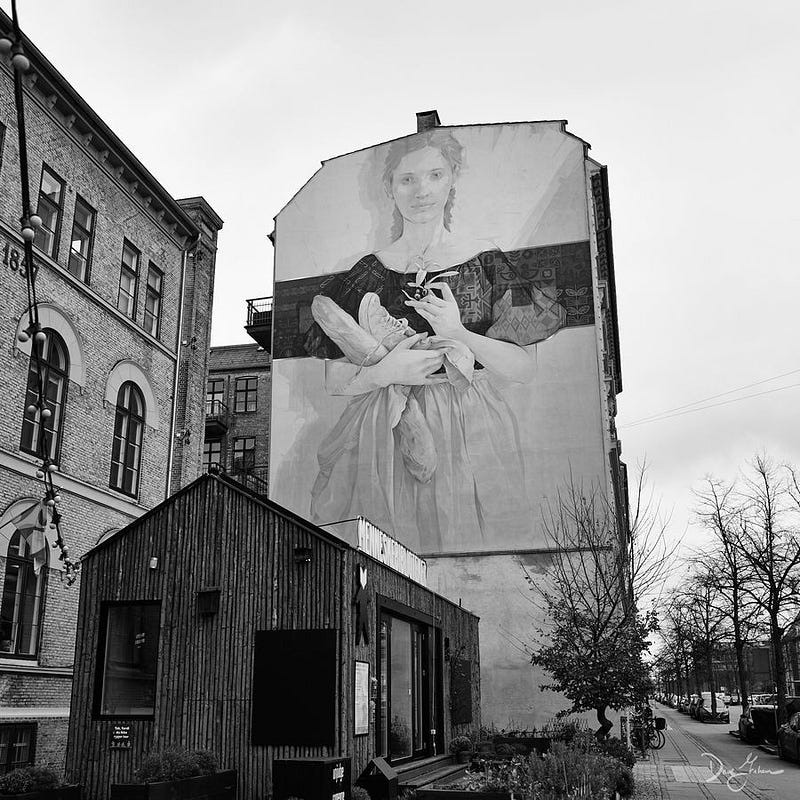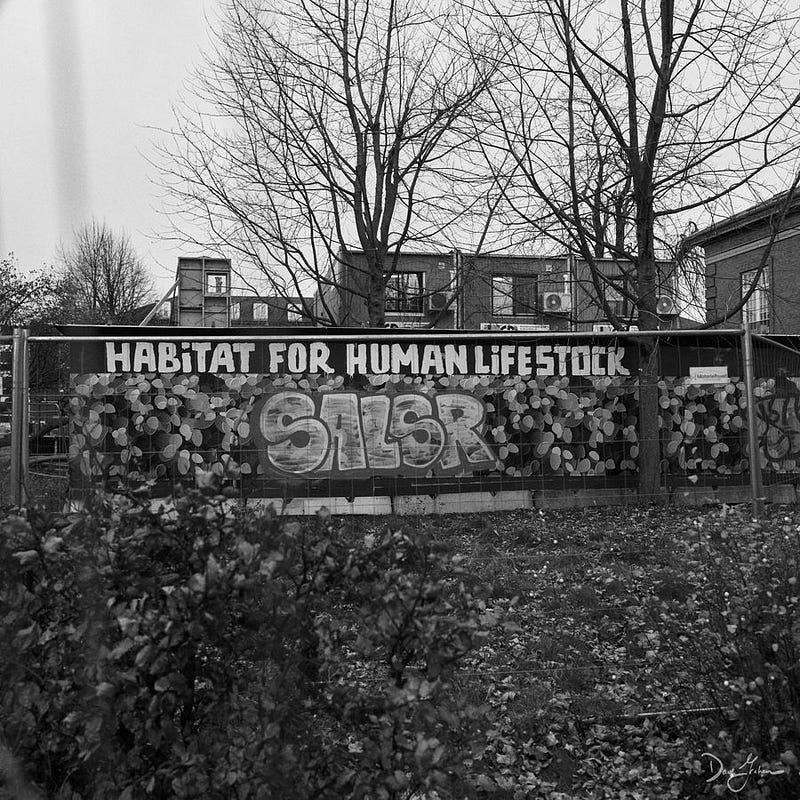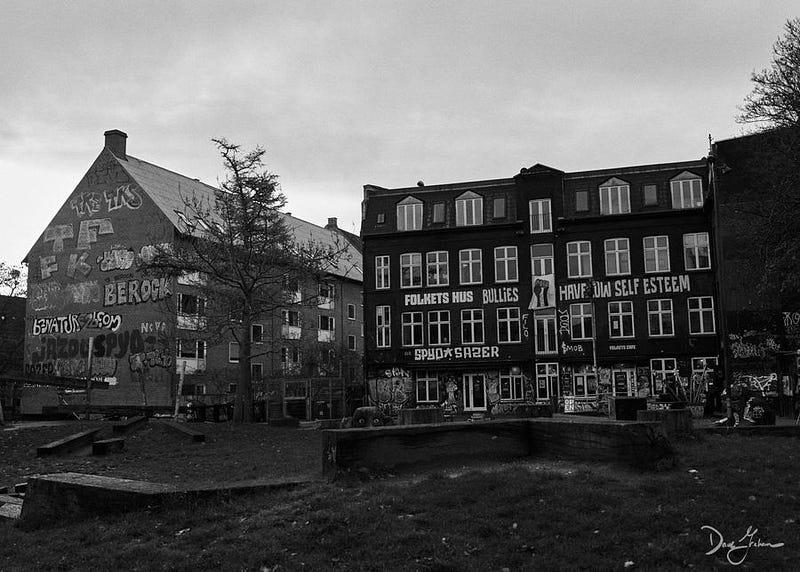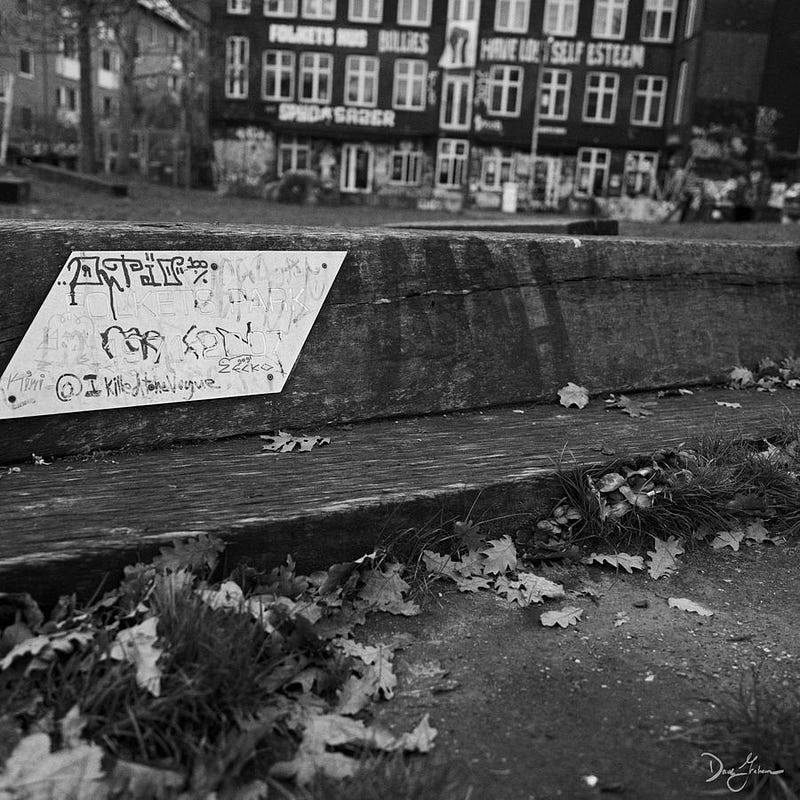The Tattoos of Humanity

Whenever I visit a city or venture to a new place, I’m always on the lookout for murals, graffitti, or the scribbled notes for society that people leave in plain sight. In a way, this is a sign that there’s life to a community, a building, a district in a way that the cold sterility of steel and glass doesn’t engender.
Sure, you can take issue with my definition of “life” here; after all, there are plenty of buildings in various stages of decomposition that have been tagged and coloured in communities long since departed. But, that’s just it, isn’t it? The canvas these buildings still offered, even in death, was worth it to someone, somewhere and that’s life.
At some point, I’m sure I’ll have enough collected works to put together a small photo book on the various images I’ve taken from around the world but, in the interim, you’ll have to just view them here.

København is ripe with different stories and displays of humanity. From the very visible to the “tucked in an alleyway,” there are these messages to a populace that wanders by each day. I wonder if there’s a certain tolerance for these things, in the way that a body builds a tolerance for caffeine or other drugs. There’s a comfortable numbness, I feel, to these resonant calls for evaluation, for renewal, for hope.
There are also the questions that they offer in turn: what is “human lifestock?” Is this perhaps a play on “livestock” and in turn, a recognition that we’re essentially governmental chattel, to be turned this way and that, bowing to the whims and fancies of oligarchical nonsense that these divorced powers seem to enjoin? What is it?

In a small square that I happened upon, there were multiple buildings tattooed with slogans and sayings. There are names, nom de guerres or plumes of the artists, images, fantastic tears into the roughened surfaces of brick and mortar. “Bullies have low self esteem” is the cry, mirrored in a sovreign Palestine flag and slogan in other buildings surrounding. You understand that “bullies” becomes more than just the people who target others; it’s indicative of a national mindset, of a seething rage against the machine of global governance and capitalism that, above all else, seeks to preserve the status quo in spite of the human cost.
These walls aren’t Marxist, Communist, Socialist, or Capitalist. They’re a canvas of expression, a deep longing expressed in splashes of paint, in the rattle of cans, and the furious whispers between co-conspirators. The paint, hurridly applied, drips like blood down these walls, emblematic of the toll having these differences of opinions will have on future generations.

I found humanity amongst the dead leaves and worn concrete of København. I found it plastered against the walls of decades old masonry, tucked into alleyways whitewashed countless times, and tattooed on metal plates stuck to wooden benches in public parks.
I heard humanity as much as I saw it in these gritty words and soaring murals. I heard a cry for change, felt the seething anger towards the faceless entities that cause so much death and despair, read the challenges scribed on the faces of everyday. I left with hope and understanding: knowing that for as long as these messages remain, humanity still has a chance for change. Knowing that the agitation that causes the soul to write is indeed unshakeable in its power to alter the course of society. Knowing, deep within, that even the simplest digital 0’s and 1’s can, in turn, influence the tide of coming generations towards the good of the many, not the idles of the few.
May it ever be so.





